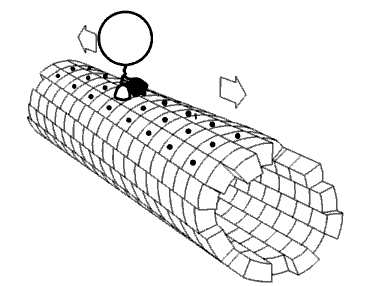
Photo from academic.microsoft.com
We measured the effect of intrinsic lipid curvature, J0, on structural properties of asymmetric vesicles made of palmitoyl-oleoyl-phosphatidylethanolamine (POPE; J0 Click to show full abstract
We measured the effect of intrinsic lipid curvature, J0, on structural properties of asymmetric vesicles made of palmitoyl-oleoyl-phosphatidylethanolamine (POPE; J0<0) and palmitoyl-oleoyl-phosphatidylcholine (POPC; J0∼0). Electron microscopy and dynamic light scattering were used to determine vesicle size and morphology, and x-ray and neutron scattering, combined with calorimetric experiments and solution NMR, yielded insights into leaflet-specific lipid packing and melting processes. Below the lipid melting temperature we observed strong interleaflet coupling in asymmetric vesicles with POPE inner bilayer leaflets and outer leaflets enriched in POPC. This lipid arrangement manifested itself by lipids melting cooperatively in both leaflets, and a rearrangement of lipid packing in both monolayers. On the other hand, no coupling was observed in vesicles with POPC inner bilayer leaflets and outer leaflets enriched in POPE. In this case, the leaflets melted independently and did not affect each other’s acyl chain packing. Furthermore, we found no evidence for transbilayer structural coupling above the melting temperature of either sample preparation. Our results are consistent with the energetically preferred location of POPE residing in the inner leaflet, where it also resides in natural membranes, most likely causing the coupling of both leaflets. The loss of this coupling in the fluid bilayers is most likely the result of entropic contributions.
Journal Title: Biophysical Journal
Year Published: 2018
Link to full text (if available)
Share on Social Media: Sign Up to like & get
recommendations!